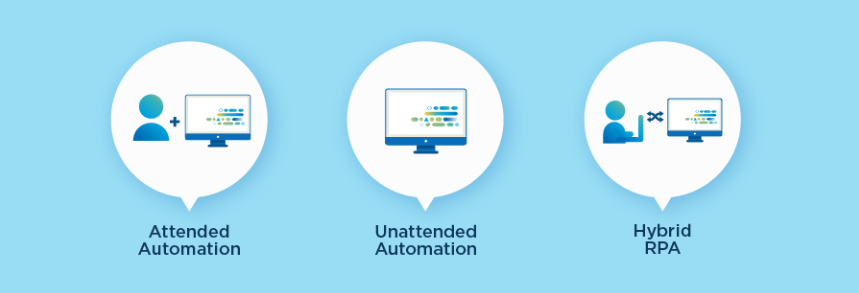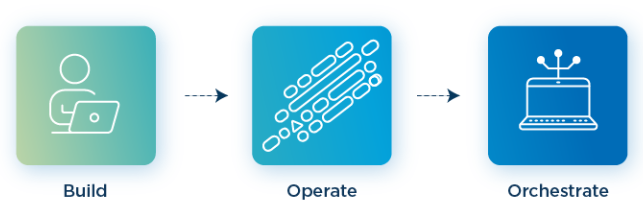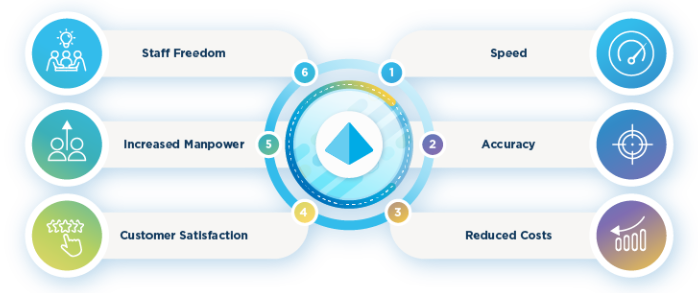Introduction: Organizational operations are being revolutionized by RPA. It's a straightforward software that uses RPA bots to replicate human behavior. It can relieve your staff of tedious work, saving you both money and time.
RPA: What Is It Good For?
The acronym RPA denotes robotic process automation. It automates digital tasks that are typically completed by human workers using software robots.
Robotic Process Automation (RPA): What is it?
With robotic process automation, you may train software "bots" to carry out various business tasks.
It all comes down to assigning these "bots" to handle monotonous, low-value tasks. Giving these jobs to a group of bots will help you save money, see results more quickly, and free up staff members' time for more important work.
RPA Bot Definition
You can build customized software bots with RPA to carry out intricate tasks. They imitate behaviors and carry out tasks by providing detailed instructions. Like a human, an RPA bot can communicate with any of your applications and systems. RPA bots, however, are able to work more accurately, more quickly, and without breaks than human workers.
What Sorts of Robotic Process Automation Exist?
The Three RPA Types
Three main types of robotic process animation exist: attended RPA, unattended RPA, and hybrid RPA.

Attended Automation
This type of RPA is installed on the user's device and typically requires a command from the user to activate. Ideal for: automation in situations where the operator handles sensitive data; initiating a procedure; or conducting audits. It is frequently a wise decision for an employee who interacts with customers or for delicate jobs like fraud or AML investigations.
Unattended Automation
This type of RPA follows a procedure that is based on rules and operates autonomously to complete tasks. Ideal for: lessening the workload of back-office staff members. Accounts and invoices are excellent illustrations of these procedures.
Hybrid RPA
End-to-end automation is provided by this type of RPA, which integrates attended and unattended bots. Ideal for: growing automations and automating tasks that are present in both front- and back-office activity.
How Does RPA Operate?
RPA functions, in essence, by giving access to bots that mimic human behaviors during a process. They have the same user interface (UI) as your employees have, so they can take notes, enter data, navigate systems, and complete tasks. They can also converse amongst systems and react to input.
Automation is most often best suited for procedures with large volume, repetitive operations that are guided by business principles.
RPA in Action

Build
Installing the bot and creating the process instructions it will adhere to are the first steps. Although RPA bot development is meant to be accessible, technical expertise may occasionally be needed. However, a lot of systems offer "drag-and-drop" automations through pre-built, low-code or no-code objects. Either the procedure is recorded or it is designed using definition documents while building bots.
Operate
Depending on whether you're using hybrid, attended, or unsupervised automation, there are differences in operation.
In attended RPA, it is typically the user's responsibility to activate or deactivate bots. These bots occasionally need additional input, such login credentials, in order to flawlessly complete specific jobs.
Unattended RPA can function without human intervention. 'Trigger events' are used to inform bots when to begin and end their job on
Orchestrate
Using Orchestrate, you can oversee and control your RPA bots. As an illustration, consider turning on and off different bots, grouping them, and defining procedures for each group.
When using RPA extensively, orchestration becomes even more crucial. It's conceivable that you'll have to manage bots across hundreds or thousands of devices, automating a variety of tasks at once.
RPA: Why is it used?
Nowadays, there is an overwhelming variety of automation options. Why then go with RPA?
Streamlining operations and eventually cutting long-term costs are the main reasons to deploy RPA in your company.
RPA may remove a variety of tedious and repetitive tasks, including some very sophisticated ones, from an employee's workload. Employees are liberated from manual processing, freeing them up to concentrate on more strategic and innovative tasks.
What Advantages Does RPA Offer?
RPA offers numerous advantages, ranging from enhanced employee engagement to greater business outcomes. These are the top six benefits of implementing RPA.

From better business outcomes, to improved employee engagement, there are many benefits of RPA. Below are six key advantages of adopting RPA.
Quickness and Effectiveness
When compared to people doing the same operation, software bots operate incredibly fast. They reduce processing time to such an extent that a task that would take a human worker hours can now be finished in a matter of minutes. Furthermore, the production quality is not jeopardized by this pace, in contrast to someone who rushes a work.
Naturally, they are not isolated activities. RPA can also change a variety of operations across your company and expedite and enhance more intricate, large-scale procedures.
Precision Removes Human Error
Everyone makes mistakes, so it should come as no surprise when people work long hours on repetitive, dull activities. However, RPA bots will always function flawlessly. As long as they have the proper guidance for their assignments.
Lower Expenses
Naturally, RPA has up-front and continuing maintenance costs. Even still, compared to the same number of human workers needed to achieve the same tasks, bots are significantly more productive and less expensive. Every task carried out by an RPA bot will be finished more quickly and precisely than if it were done by a person. This saves your company a lot of money and gives your employees more time for other activities.
Enhanced Contentment with Clients
The 'human touch' will be beneficial at certain stages of any customer experience (CX) journey. But RPA gives your consumers a lot of benefits in other areas. For example, clients should expect faster reaction times when robots operate alongside employees.
And there's the bonus that comes indirectly from employee autonomy. RPA frees up your human customer support agents' time to handle more complicated customer concerns by doing tedious duties. They can concentrate on giving outstanding, personalized solutions to increase client happiness.
Enhanced Productivity
RPA is an automated tool that allows you to hire more workers by connecting you with remote workers. This additional member of your team will be on call around-the-clock, seven days a week, without taking time off for vacation or illness, and their output won't waver.
They will provide considerably more hours to the company than they take on, even if they will require some training. Additionally, they'll free up other staff members for more worthwhile tasks.
Staff Freedom
Data entry and invoice processing are two boring tasks that are relieved by Staff Freedom RPA. By automating back-end system processes, you can streamline workflows and free up staff members who were previously responsible for these tasks. These employees may now devote more time to work that is demanding, imaginative, and ultimately stimulating.
Intelligent automation and RPA are incredibly powerful tools.
What Difficulties Does RPA Face?
If you jump right into the RPA implementation paradigm without doing your homework and planning, it could become problematic.
A focused planning stage can assist you in overcoming obstacles head-on and removing some of them before they appear. Three essential goals should be included in it: identifying the digital systems and processes that should be the focus of automation; involving relevant stakeholders who can support and encourage the use of RPA; and educating staff members about the upcoming changes.
